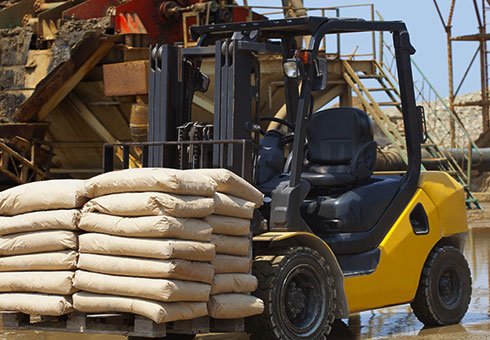Forklifts are essential in many businesses, dealing with heavy loads and weathering harsh environments. However, they are exposed to rain and may develop some problems such as rust, electrical failure, and other operational difficulties. Employing forklift rain covers is a practical approach. These covers ensure that your equipment is shielded from rain, dust, and other aspects. This blog post will address questions like why use forklift rain covers? What type of rain covers are there? How to select? And how to take care of your cover? So let’s get started.
Why Does Forklift Rain Cover Matter?
Forklifts are indispensable in industries such as warehousing, construction, and any places requiring the lifting and moving of heavy loads. They carry large loads and perform under harsh circumstances. When exposed to rain, forklifts can suffer from many problems:
- Rust and Corrosion: The effect of rainwater can cause rust and corrosion mostly on the metal parts. This can lead to costly repairs and decrease the useful life of the forklifts.
- Electrical Problems: Water exposure can also cause shortening or even complete failure of the electrical parts.
- Operational Issues: The moisture on the seats, controls, and steering can affect the performance and safety of the forklift.
To overcome these issues, use forklift rain covers. They safeguard your forklift from harsh weather and save it from degrading quickly.
Exploring Forklift Rain Cover Options
Forklift rain covers come in various options, each designed for different requirements.
- Basic Covers: These are basic and less expensive types of cover that shield your forklift from rain or dust. They are easily installed and removed but can provide low protection from wind or snow.
- Heavy-Duty Covers: These covers have been made using stronger materials suitable for harsh weather conditions. They have enhanced features such as reinforced stitching, strong buckles, or belts for extra hold and support.
- Custom Covers: Custom covers are better for specific forklift models. These covers have been designed to fit your forklift snugly to ensure maximum protection.
- Full Cab Covers: If you want to cover the entire cab or maximum protection, full cab covers are the best option. They surround the entire forklift and provide the best protection from rain and other conditions.
Selecting the Most Appropriate Forklift Rain Cover
When choosing a rain cover, certain factors need to be taken into consideration:
- Material: The Quality of the cover varies depending on the material used. When selecting the covers, ensure they are made from waterproof and weather-resistant materials such as polyester and vinyl. These materials are intended to be water-resistant as well as being resistant to UV light.
- Size: Ensure that the cover fits well on your forklift. Too small will not provide proper cover and too large might be very sensitive to the wind. Make sure that the forklift you are planning to cover matches the dimensions of the intended cover.
- Features: There are other features that you might also consider depending on your specific requirements. For example, the edges and straps have reinforcements that can prevent the cover from blowing away during a windy day. Ventilation opening helps avoid the stagnation of moisture under the cover.
- Ease of Use: A cover that is relatively simple to install and remove will save time. Choose covers that can be fitted easily and those that are easy to store.
- Weather Conditions: Think about the typical weather conditions in your region. If the weather is extremely wet, windy, or hot, it is recommended that you use a heavy-duty or custom-fit cover.
Forklift Rain Cover: How to Use and Take Care
To use forklift rain covers, it is quite easy to do so. Here are a few steps:
Installation: Make sure that the cover is properly placed on the forklift. Fix it firmly with any straps or ties to avoid the risk of it being blown away in the wind.
Cleaning: Remember to clean the cover regularly to avoid having a layer or dirt or grime accumulating on it. Some covers are simple enough that they can be cleaned with warm water and a cloth. For deeper cleaning, follow the manufacturer’s guidelines to ensure that you are using the right procedures.
Advantages of employing Forklift Rain Covers
Using rain covers offer several advantages:
- Extended Life: By covering your forklift, you are likely to keep its lifespan long and avoid spending frequent money at the repair.
- Improved Safety: A well-protected forklift means the equipment is less likely to develop operational problems.
- Cost Savings: Investing in a rain cover can save you money in the long run by reducing maintenance costs and downtime.
Final Thoughts
Forklift covers remain one of the best solutions for ensuring that your valuable equipment is not damaged by rain. If you are making the right choice when selecting the cover, your forklifts will always be in good condition, and perform as you want them to. Some factor that will help you select the best rain cover incluse your needs, climate, and your pocket. No matter which cover you choose, rain cover for a forklift will always the best way to get a longer life of the equipment.

Average Rating